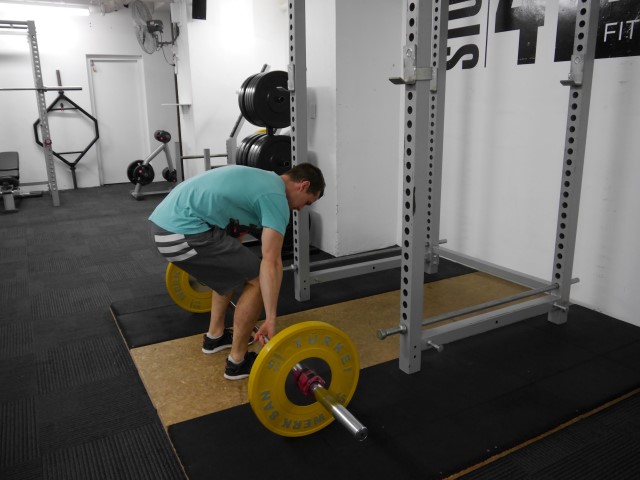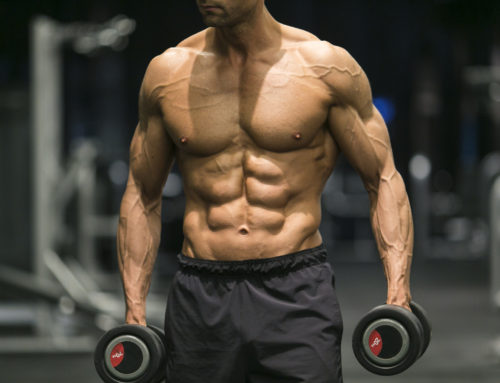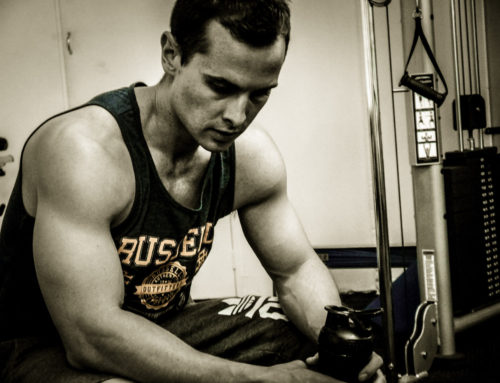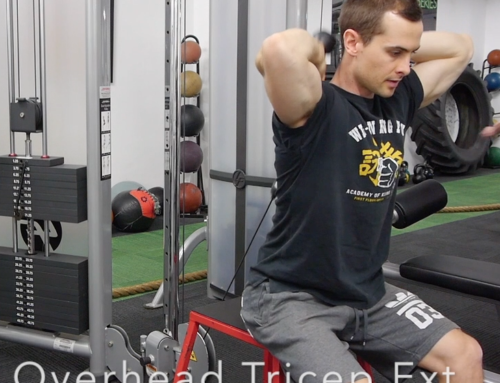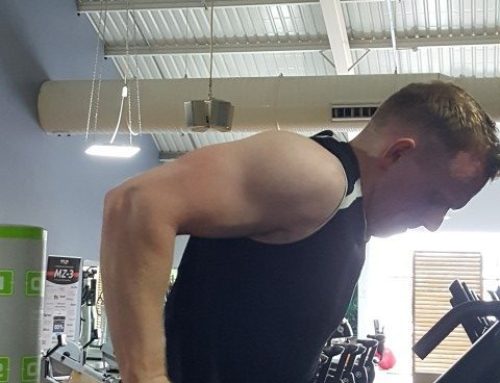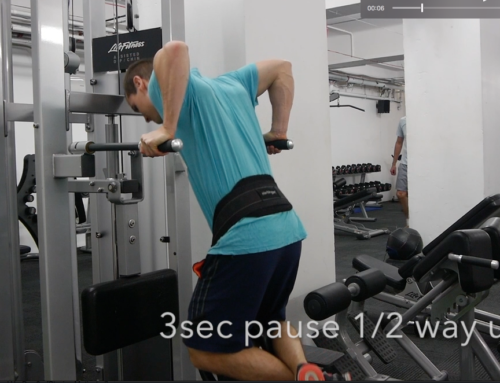That one big lift not improving? For some reason you just can’t progress past X weight on your squat, deadlift or bench perhaps? I know how frustrating that can be. In fact, until the last couple of months I had hit a road block on my squat. Whatever I did it just wouldn’t improve. And so I went back to this basic system that I’ve used for a long time. I call it Failing to Win.
With this method not only are you going to get stronger but you’re will also grow body parts lacking in size and also reduce your chances of injury. You will learn a method to bust through plateaus whenever they happen, empowering your strength and your training. There’s nothing worse than not progressing on a lift after months of hard work so here’s my Failing to Win method.
Failing to Win
First, you’re going to pick the lift you want to improve. Obviously this is going to be the one that hasn’t improved in this longest period of time. Now you’re going to set aside a good hour and a half to test that lift in your upcoming training session. You’ll also need a way to video your lifts – be that a phone or camera. You will need a tripod or a friend to record. Propping your phone up against a dumbbell at what will likely be an awkward angle isn’t going to cut it. Finally, you will use no assistance gear – no belts, wraps or similar. Just you and the bar. The one exception is lifting straps to help grip on the deadlift.
What we are looking for here is data. We want to know is:
- Where does the lift fail? Eg. At what point can you no longer push/pull?
- Where does the form fail? Eg. In what way does the lift turn ugly?
To work these things out you will follow the routine below and film the lifts that I have starred on the routine. It will take between an hour and an hour and a half. You will need to be pretty fit to attempt this routine with generally good form and a solid training age of at least 2 or 3 years in the lift you are going to test. If in doubt, seek the advice of a Personal Trainer or another suitable health professional.
The routine
This routine is named Failing to Win for a reason. You are going to perform your given lift two a couple of different types of failure to identify weaknesses in form and to help you understand your main ‘sticking’ point – the point at which the lift fails. When filming you need to film at exactly 90 degrees to the lift from around wait to chest height. You will perform this with no spotters – but will obviously use safety pins for the bench and squat. This is so you can see your form without someone in the way.
We will assume you know your one rep max (1RM) for calculating your weights based on the percentages detailed.
Warmup and First Test
Rest 180 second between every set after set 3. Film all sets with *
Set 1: 5 reps @ 30% of 1RM
Set 2: 3 reps @ 50% of 1RM
Set 3: 3 reps @ 70% of 1RM
Set 4: 1 rep @ 80% of 1RM
Set 5: 1 rep @ 90% of 1RM
Set 6: 1 rep @ 95% of 1RM*
Set 7: 1 rep @ 100% of 1RM*
Set 8: 1rep @ 102.5% of 1RM*
Set 9: add between 1 and 2.5% of 1RM until you fail your lift eg. You cannot get the weight up. You will obviously have to put the weight on the safety pins for this. You may have already failed well before this.*
Rest 10 minutes.
The test above will give you your sticking point. The point at which you tried to lift the weight but got ‘stuck’. Now you are going to work out where your form breaks down. It’s important that you perform the exercise until you can’t lift it anymore or you feel your form is really compromised.
Rest 180s between sets.
Set 1: 5 reps @ 50% of the 1RM you just set
Set 2: 5 reps @ 75% of 1RM
Set 3: 7 reps @ 75% of 1RM*
Set 4: 9 reps @ 75% of 1RM*
Set 5: 11 reps @ 75% of 1RM*
Etc. until you can’t complete the reps.
Again, you will film the sets where you think you are going to fail. I’ve * the ones I think that will be most likely on.
The Data
Now you are going to look back at the first set of filming – your one rep maxes. You are going to look and see the point that you fail on. Do you fail to get a deadlift off the floor, past your knees or locked out at the top? What about on the squat? Is it from the bottom, middle or top? Also look at your lifts that you completed but were very close to your max. At what point in the movement did things slow down? This is your sticking point. See table below for what to do.
| Lift | Sticking point | Fix |
| Squat | Below parallel | Add quarter to bottom of squats for. |
| Half way | Squat from pins set just below sticking point. | |
| At the top | Improve glute power and core with farmers walks and heavy squat un-racks (120% of max).
Could also add quarters at the top position of squats |
|
| Bench | At the chest | Add quarter to the bottom of bench press and do full range Dumbbell press with pause in stretch position at the bottom. |
| Half way | Work on upper back strength and staying ‘tight’ in the lift so you can drive with feet. | |
| On lock out | Increase tricep strength with a few phases of narrow grip bench press. | |
| Deadlift | Off the floor | Make sure you are tight before lifting. Add 2 second pauses 1 inch off the floor before completing deadlifts. Drop working weight by around 40% to perform these. |
| At the knees | Strengthen glutes and lower back with a variety of back extensions and good mornings. | |
| On lockout | Make sure your shoulders remain back and tight off the floor and add in heavy rack deadlifts from just above the knees. |
You’ll now look at your increasing rep sets. If you’ve been training for a couple of years, hopefully you know what a really good squat should look like, even if you don’t feel yours in there yet. This is a reasonable and quick look at squatting form which you might find useful when looking at your squat – https://www.youtube.com/watch?v=zoZWgTrZLd8.
On the set you reached failure and couldn’t perform the increased reps, your form should have started to fail for the last few reps. Use the table below while watching your video to identify the most likely weaknesses and some quick notes on what to work on.
| Lift | Failure | Fix |
| Squat | Chest collapses | Strengthen middle back with pullups and seated rows. |
| Knees buckle in | Strengthen VMO of quads and glutes with split squats and various glute exercises. | |
| Body Twists | Ensure structural balance by performing single sided leg exercises such as split squats and step ups for a couple of phases | |
| Back rounds | Increase lower back and middle back strength with back extensions and good mornings. | |
| Butt shoots up first | Improve glute and lower back strength while also performing higher rep squats with the bar high on the back. | |
| Bench | Bar drifts towards feet | Set shoulder blades back and down rather than shrugging. Improve scapula retractors by retracting on all pulling exercises. |
| Bar drifts towards face | Strengthen serratus anterior with Dumbbell pullovers and neutral grip Dumbbell presses. | |
| Elbows wobble | Work on strength around the elbow flexors and extensors such as bicep, triceps and forearms. Also SQUEEZE the bar hard. | |
| Butt raises off bench | May be bad habit or weak hamstrings. Work on some heavy explosive hamstring curls. | |
| Body wobbles | Work on bench pressing technique to ensure you are ‘tight’. Also work on global core exercises such as heavy farmers walks. | |
| Deadlift | Upper back rounds over | Make sure shoulders at set back in starting position. Improve upper back strength with lean away pullups and rows. |
| Shaking on lockout | Glute weakness or shoulders not far enough back. Work on glute strength and middle back strength with snatch grip deadlifts. | |
| Butt shoots up first | Watch the video of your lifts – your butt should start where it is when the bar first leaves the floor. Don’t start with your butt any lower. | |
| Lower back rounds. | Lower back strength. Lots of back extensions and good mornings with a solid core routine. | |
| Grip goes | Improve grip by training it daily with a variety of exercises. The grip responds well to varied and regular stimulus. Just grip lots of different heavy things until you can’t anymore. |
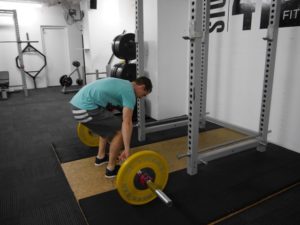
Upper back rounding
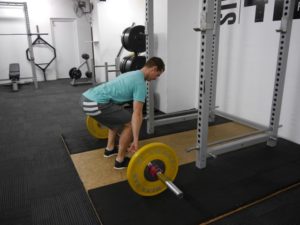
Strengthen upper back to achieve stronger posture and starting position
Conclusion
The Failure to Win method takes a lot of adjustments. You have to study your lifts that you get from the workout, make an educated guess about your weaknesses and then try exercises to address those weaknesses.
Sometimes, you will do those accessory lifts and it won’t help at all. You may have got it wrong and you should try something else. In the end this is about assessing yourself and work out which exercises work best to address your weaknesses. Many of the top lifters follow similar methods in the quest to become as strong as possible. Remember, you are only as strong as your weakest link. Also, perfect technique will ultimately lead to a bigger lift so if the weakest link is causing a break down in form that will also affect how much weight you can get moving.
If you get strong on your weak links you’ll also be able to lift more for more reps without breaking form, ultimately getting stronger and bigger. Test yourself. Decide what you will work on and re-assess constantly and you will bust through those plateaus on your quest for strength and size.
